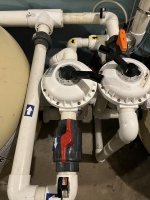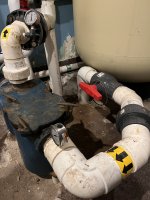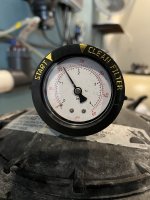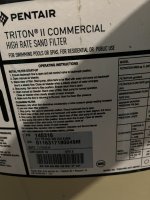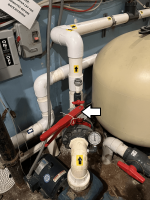- Feb 6, 2015
- 7,932
- Pool Size
- 12300
- Surface
- Plaster
- Chlorine
- Salt Water Generator
- SWG Type
- CircuPool RJ-45 Plus
Based on if the filters are in parallel or in series may change the proper backwash procedure.Will post some pics along with proposed solutions.
Post those pics from a few different angles so we can see everything.






